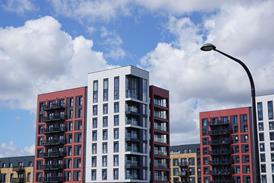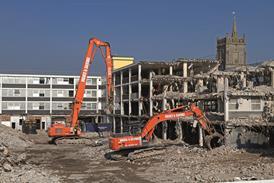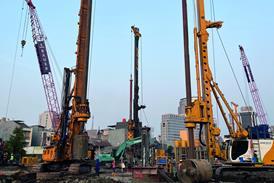Recent advances in electronics have allowed anti-noise equipment to be mass-produced, thereby bringing the cost of such systems within the reach of commercial building owners. Signal processing algorithms and new techniques to limit turbulence mean that anti-noise can now be used in ductwork.
Acta is one such system, from French manufacturer Aldes International. Aldes brands the system a "noise killer", and it has two noise-reducing components:
The active part of the system comprises two microphones and a loudspeaker (see figure 1). The first microphone is fitted upstream of the loudspeaker relative to the sound, and is protected from turbulence and dirt by a sphere of polyurethane foam.
This microphone is used to detect noise and feeds into an electronic sound generator. This in turn calculates what sound waves are required to cancel out the noise entering the silencer, and creates them digitally. The digital signal is then passed to the loudspeaker, which generates this sound.
The second microphone, located downstream of the noise, works as a control. It checks the effect of the anti-noise, and allows the sound generator to adapt the signal accordingly.
Aldes makes impressive claims about its system, saying that Acta can attenuate a wide range of frequencies. It is held to be particularly effective in cutting low frequency noise – usually the most difficult to eliminate in ducting layouts.
Aldes says the system works with any kind of fan, operating at any speed. The manufacturer's data suggests that Acta betters the attenuation of an ordinary passive system by 5 dB at most frequencies (figure 2).
Fitting the unit
Acta was designed to fit into a circular duct close to the fan. Aldes recommends using heat shrinking tape or aluminium-backed sticky tape to ensure a leak-proof join. An efficient air filter also needs to be installed upstream, to keep the unit free of debris.
As for powering the unit, an ordinary 240 V ac electricity supply may be used. However, some minor internal wiring is required to connect the fault indicator and mains supply lights to their 24 V dc supply.
Francis Brunn from Aldes said Acta has been installed in more than 200 sites, most of them in France. It has been applied in a diverse range of buildings: from research laboratories and hospitals to music halls and cinemas.
The most challenging application Brunn could offer was a TV studio in Monaco. Here, ductwork shifting 8·3 m³/s had to meet a noise target of just 27 dBA.
As with any other barrier inserted into the airflow, however, the silencer inevitably carries a pressure drop penalty. This penalty ranges from 20 Pa at 0·28 m³/s for a 250 mm diameter unit to 10 Pa at 1·9 m³/s for a 630 mm unit.
Are this pressure drop and resultant impact on energy efficiency, plus the additional cost of installation, worthwhile? Ultimately the answer is site-specific: how important is noise reduction, and how much will the 5 dB advantage be worth over a passive silencer in terms of greater occupant satisfaction.
Source
Building Sustainable Design



















